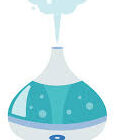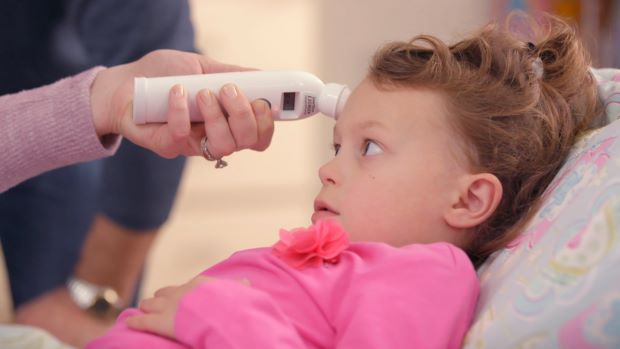Serious Health Effects of High Humidity in the House
There are several health problems from the high humidity in the house that you should be aware of.
Humidity is the moisture content in the air. You can use a hygrometer to find out whether your indoor humidity is too high.
In another article, we said that 70 percent humidity outside is high. It feels even higher indoors.
The recommended relative humidity level is 35 to 55 percent. If it is higher than that, you will be uncomfortable in that room.
Health problems of high humidity in the house
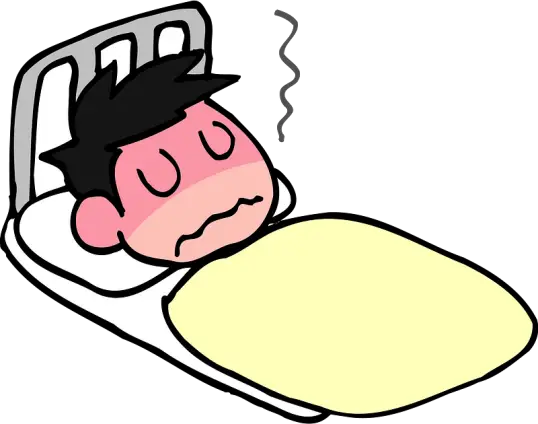
Briefly, here are the main health problems that you will encounter as a result of high humidity at home:
- More allergens
- More bacteria and viruses
- It can trigger asthmatic attacks
- More airborne contaminants
- Throws your body mechanics into whack
As you can see, there is enough cause to worry when you have high humidity indoors. But just what indoor humidity is too high? 30 to 55 percent indoor humidity is comfortable. 40 to 60 percent might be okay, but anything above 60 percent is too high.
In more detail, here are the effects of high humidity on health:
1. More allergens thrive indoors
When the indoor humidity rises, indoor allergens thrive. For instance, dust mites thrive in high-humidity environments. And so do fungi.
These two are some of the most sinister indoor allergens. Fungi cause many illnesses such as candida auris, aspergillosis, candidiasis, fungal infection of the eyes, and others.
On the other hand, the microscopic-sized dust mites do not cause any illness in healthy humans. However, for people with certain allergies, dust mites can trigger certain reactions.
2. More bacteria and viruses
Humid air feels warmer and heavier than dry air. This has many disadvantages. For instance, when the air is too humid, bacteria and viruses tend to float longer before they fall to the ground.
Thus, the chances of inhaling these disease-causing agents are very high. Also, bacteria and viruses tend to thrive and breed faster in humidity levels that exceed 60 percent.
When there are more than three people gathered in a small space, such as an office or a car, a person with a cold can infect all the others.
When the air is drier, the pathogens are not likely to remain afloat for long. They fall to the ground, or they settle on other surfaces. They would be harder to inhale.
Prevent your indoor air from reaching dangerous humidity levels. You can do this by using a dehumidifier or by using natural means to lower indoor humidity.
3. High humidity triggers asthmatic attacks
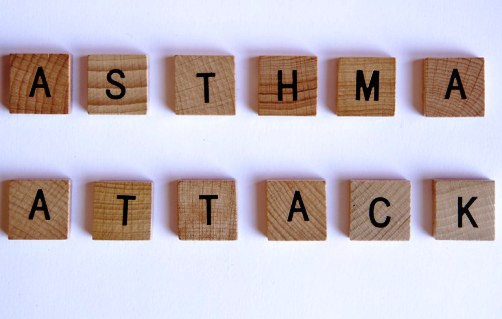
When the indoor air is too dry, it can trigger asthmatic attacks, especially if there is dust. On the same note, if the air is too humid, mold spores and fungi trigger asthmatic attacks.
Mold spores and fungi are not visible. Rather, they float in the air, you inhale them, and they aggravate respiratory illnesses.
If you suffer from asthma, if you inhale fungi and mold spores, they will trigger asthmatic attacks. They thrive in humid conditions that are higher than 60 percent.
Always look for signs of mold infestation in your home. Check the dark and humid spaces in the bathroom, kitchen, and basement.
If you see dark spots on the ceiling, under the kitchen sinks, and in other dark spaces, you have mold.
If you have a whole house dehumidifier, it can also cause mold spores and fungi if it is not well maintained. Ducted systems are notorious for causing fungi to find their way into your indoor space.
4. More chemicals and other contaminants in your air
High humidity leads to the release of more chemical air contaminants. For instance, you are more likely to experience the smell of formaldehyde when the humidity is high than when it is low.
Some sources of formaldehyde include the adhesives and glues that manufacturers use to make furniture.
This chemical gas also comes from new building materials, clothes and bedding, carpets, and other sources.
Since some of these sources, such as bedding and clothing, contain minimal amounts of formaldehyde that is added to preserve the fibers, they may off-gas more in humid air than in drier air.
Some ill effects of formaldehyde include eye and throat irritation, skin rashes, breathlessness, and many more.
5. Throws your body mechanics into whack
In another article, we discussed the effects of high humidity on your body. There are several of them!
Indoor humidity and health are related directly. Most importantly, when your body senses high humidity, a few things happen.
First, you will experience a lot of clamminess on your skin. The reason for this is that the high humidity makes the air feel warmer.
To cool down, you start sweating. But this sweat does not evaporate. Rather, it remains on the skin, making you more damp and uncomfortable.
When you sweat, you are likely to experience dehydration. Thus, you have to drink more water to stay hydrated. If you do not lower the humidity, you keep sweating more until your clothes soak through.
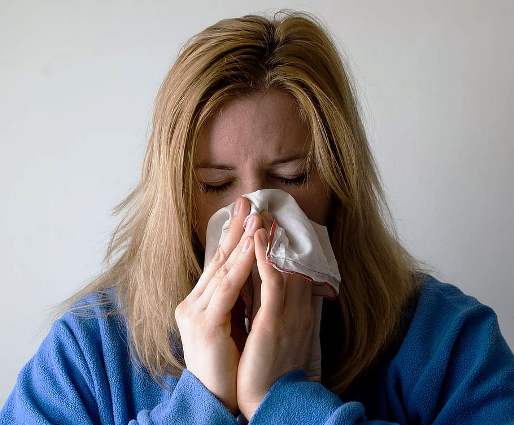
High Humidity in House Health Problems FAQ
As you have seen in the past sections, there are some high humidity problems.
If you still do not fully understand how high humidity can affect your health, keep reading as we shed more light in the FAQ section:
What is high humidity indoors?
If the level of moisture content in the indoor air exceeds 60 percent, that is high. 80 percent humidity is too high indoors, as is 90, while 100 percent humidity can cause serious breathlessness. Keep the indoor humidity level between 30 and 55 percent.
What causes high humidity in a house?
Many things can cause high humidity in a house. First, if you live in a humid place like Florida, the humidity will be naturally high almost throughout the year.
Also, cooking, washing clothes, and flooding increase moisture content in the air. This is why you should always run a dehumidifier. Some indoor plants can also make your air more humid.
If you live in Seattle, you certainly need to buy a dehumidifier to tame the runaway moisture content.
What is dangerously high indoor humidity?
30 to 50 percent humidity is comfortable, while 35 to 60 percent is okay.
However, anything above 60 percent is too high humidity, and it can make mold, dust mites, fungi, and other indoor allergens thrive.
At 80 percent, that is dangerous because you might even have problems breathing properly.
How can I lower the humidity in my house without a dehumidifier?
You can buy indoor plants that help lower humidity. Also, you can dry your clothes outside rather than inside.
You can also run your air conditioning because it helps. Adding ventilation in a windowless room can also help a lot. Keep the doorways and windows open, since that helps a lot.
How do I fix the high humidity in my house?
The best way is to run a dehumidifier if there has been flooding or if you live in a place with high humidity.
It will stop running as soon as the set humidity level is attained. You can also try some of the natural ways to lower moisture content of your indoor air.
How do you know if your house is too humid?
If you experience too much clamminess on your skin if you sweat excessively, and if you find condensation on the windows, you have too much indoor humidity, and you need to tame it. Sometimes, dampness will also form on surfaces, and mold can start growing.
Conclusion: High humidity problems
High humidity in the house causes health problems in their numbers. However, you should not let it get to that.
You need to lower the level of moisture content in the air at home. If it is too high, you will see mold symptoms in the house.
Too much moisture will also damage your paintings, furniture, and books, and it will cause mildew to grow on your clothes.
If your children have constantly runny noses, coughs, and other cold-like issues, you have excess water vapor.
